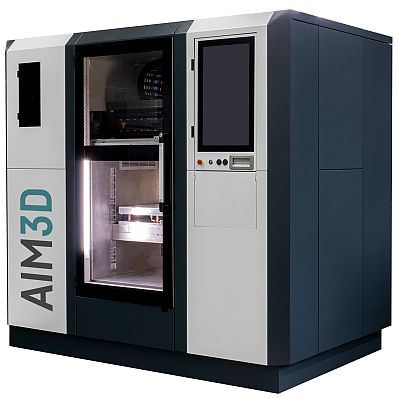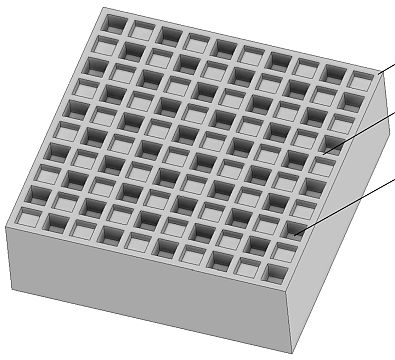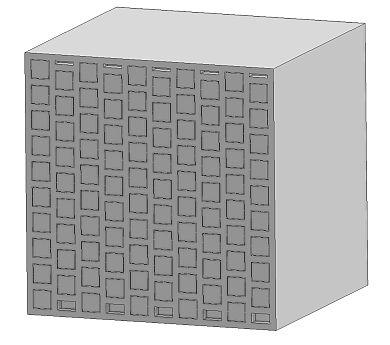3D Printer Launches with New Voxelfill Process that Creates Stronger, Lighter Components

The German company AIM3D is launching the new ExAM 510 granulate 3D printer. The Rostock-based company has developed this large CEM system up to the beta phase in a period of just 1.5 years.
The new ExAM 510 offers a greater build area, higher precision and accelerated build speeds. The ExAM 510 printer is a multi-material printer for additive manufacturing that can consecutively print up to three materials. The increased build area of 510 x 510 x 400 mm now opens up a multitude of applications.
The build area can be heated up to 200°C in order to reduce the stresses in the component and to process high-performance materials. The significantly increased build rate or print speed depends of course on the material used and can be as high as 250 cm³/h (when using a 0.4 mm nozzle). This extruder class enables extrusion rates that are up to 10 times higher than commercially available filament extruders.
Voxelfill Process Overcomes Inhomogeneous Strength Properties
In additive manufacturing of polymers, components have inhomogeneous strength properties due to the layer-based build process.

This manifests itself primarily in the form of tensile and flexural strength shortcomings, as well as very brittle behavior along the Z axis. The phenomenon of inhomogeneous strength properties must be resolved in order to enable a wide applicability of 3D-printed components.
By using the 3D extrusion technology of the CEM process, AIM3D has developed a Voxelfill strategy that overcomes these limitations and increases the cost effectiveness of the CEM process. Voxelfill can also be used for multi-material components and is suitable for constructing 3D components using metals, as well as plastics and ceramics.
The Two-Stage Voxelfill Process
With the Voxelfill approach, components are no longer created exclusively in layers, but rather they utilize cross-layer filling by using so-called voxels as volume areas.
To do this, the component contour is first created as usual as the basic structure using one or more webs of the extruded material. A lattice pattern is created inside the component, which defines the boundaries of the volume elements to be filled, similar to cavities. This structure of the voxels to be filled resembles the honeycomb in a beehive.

The Voxelfill strategy now comprises two process stages: 1. Generation of a lattice structure: the CEM system repeats this structure up to a defined height of the volume elements, then at this point the previously created cavities (voxels) are filled by injecting thermoplastic material with the extruder. 2. Filling phase of the voxels: now the second, even more important component of this 3D printing strategy is deployed: when the volume areas are filled, this does not include filling all voxels in one plane. This would again result in a Z direction weakness directly in the "seam" plane. By shifting the volume elements halfway up the voxel, a kind of "brick-like bond" is created in the component, resulting in the yield line being offset. This results in an enormous increase in strength and also improves the elasticity of the components in the Z direction.
Potential of Voxelfill
Variations of the Voxelfill strategy with the CEM process enable the use of various materials: hybrid multi-material solutions with different Voxelfill materials and different materials for the contour/structure of the inner walls become possible. This way, the material properties can be "customized."
With Voxelfill it is possible to only fill the areas of a component that are absolutely necessary for the flow of forces. As a result, from the outside these components purely look like conventional parts and can also benefit from applying finishing processes. At the same time, however, the 3D printing process is carried out with reduced material and weight, which can produce lightweight components.
Want more information? Click below.
Rate this article
View our terms of use and privacy policy ::m::